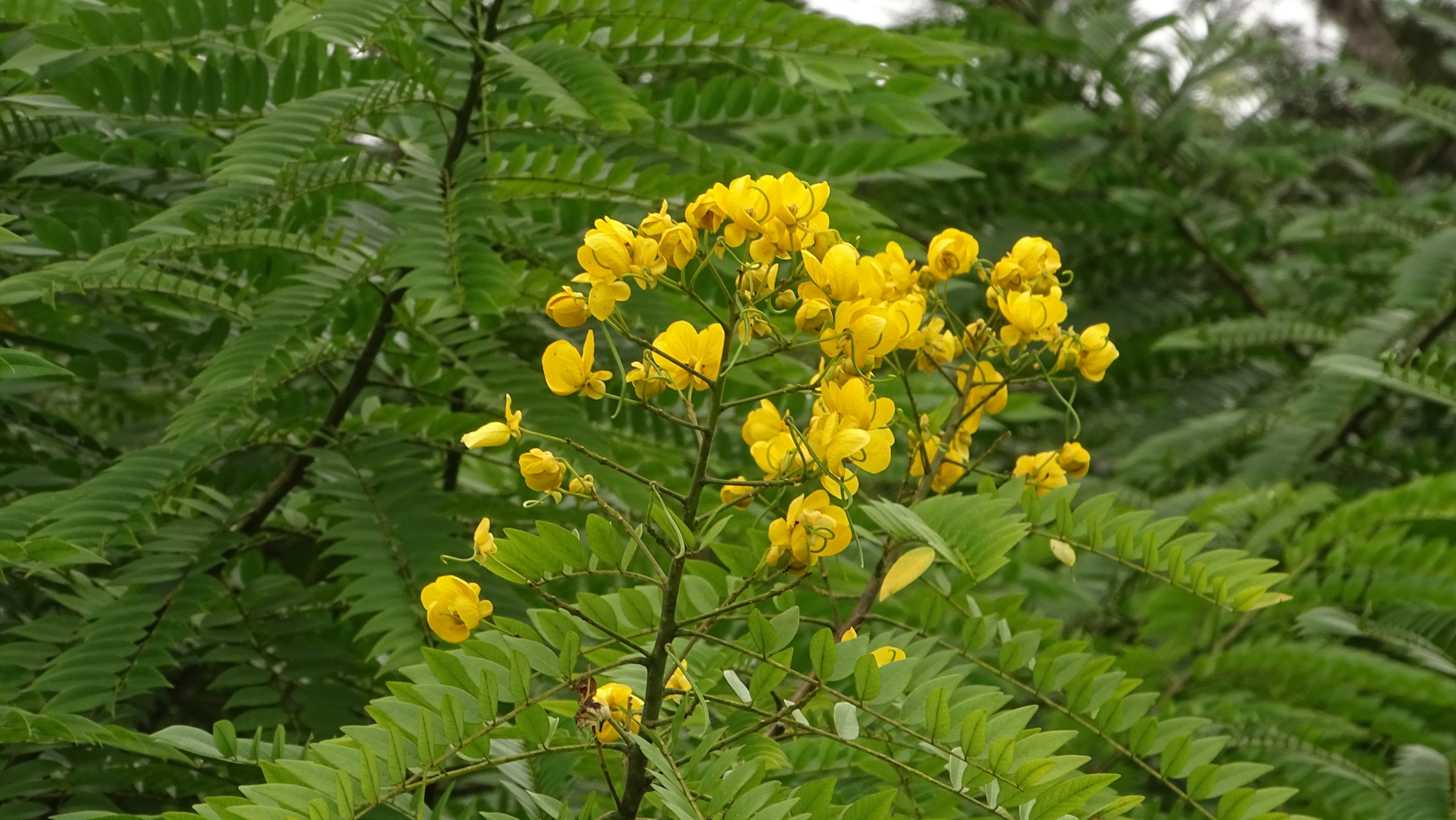Feature image: Flowers of S. spectabilis in full bloom at the Wayanad Wildlife Sanctuary. Photo: N. R. Anoop
Organisms that are introduced accidentally, or intentionally into places where they do not belong, and that cause extensive damage to the native flora, fauna and the ecosystem are termed invasive species. The ornamental plant, Spectacular Senna (Senna spectabilis), is one such species.
A member of the Fabaceae (bean) family, Senna is native to South and Central America but has been introduced worldwide due to its ornamental appeal. In India, the plant has invaded many protected areas, particularly in the Western Ghats, including the forests of Nagarahole, Bandipur, Mudumalai, Sathyamangalam, and Wayanad within the Nilgiri Biosphere Reserve.
Studies in recent years have revealed that invasive plants can use animals for seed dispersal and colonisation, hence complicating management efforts. To understand how S. spectabilis is able to invade large areas within forests with such rapidity, a team of researchers from the Ashoka Trust for Research in Ecology and the Environment and Ferns Nature Conservation Society
conducted a study in the Wayanad Wildlife Sanctuary (WWS) in Kerala, which is a part of the larger Nilgiri Biosphere Reserve.
The principal assumption was that the seed dispersal of S. spectabilis was
facilitated by large, herbivorous and wide-ranging mammals, such as the Asian elephant, Indian gaur and spotted deer. The researchers walked along existing paths inside the sanctuary and examined the presence of seeds in the faeces of herbivorous mammals, including the aforementioned mammals, Indian crested porcupine, black-naped hare, Asian palm civet and domestic livestock.
Based on the presence of seeds in the faeces of seven mammal species investigated, this study found that only three species—namely the Asian elephant, Indian crested porcupine and spotted deer—actively dispersed seeds. Of the three, based on the number of seeds, elephants were the primary and largest dispersers of seeds. This also coincided with the fruiting of S. spectabilis and the migration of elephants into the WWS from other places in the Nilgiri Biosphere Reserve.
As a large-bodied and wide-ranging species, elephants need to literally eat tonnes of food every day to meet their nutritional requirements. However, since they are not able to digest most of the plants they eat as part of their diet, many seeds remain undigested and intact in their dung, thus facilitating germination. According to the researchers, this could explain the current spread of S. spectabilis and predict its future invasion in the WWS. Also, since the seeds of S. spectabilis are eaten by multiple mammals, the researchers feel that there is a chance that the plant could spread across different vegetation types and agricultural spaces around the sanctuary area.
In 2012, the plant had invaded less than 15 km2 in the WWS, but as of 2020, the species had spread across an area of over 78 km2 or about 23 percent of the entire sanctuary. If urgent mitigation to arrest the spread of this plant is not undertaken, there is a possibility that in the next 10 years, the entire sanctuary will be invaded by S. spectabilis. The researchers suggest that constant removal of adult trees and pruning of branches before maturation of fruits in the summer could control the spread of the plant. There is also an urgent need to survey the Western Ghats and map the areas to identify the extent of its invasion and examine changes in the existing populations.
Original paper:
Anoop, N. R., S. Sen, P. A. Vinayan and T. Ganesh. 2021. Native mammals disperse the highly invasive Senna spectabilis in the Western Ghats, India. Biotropica 54(6): 1310–1314. https://doi.org/10.1111/btp.12996.






